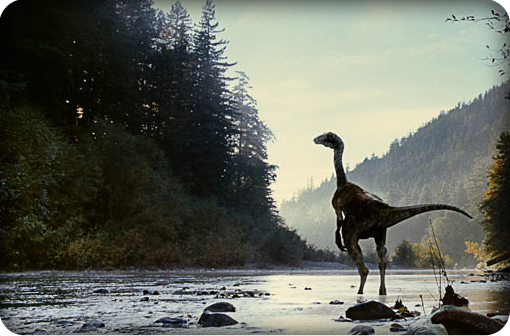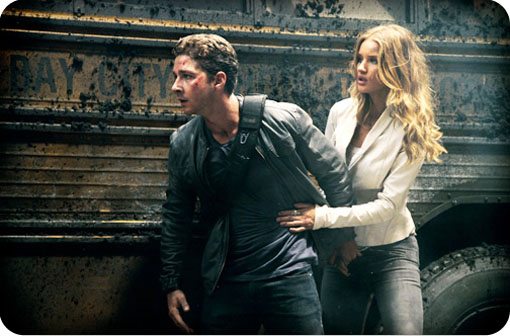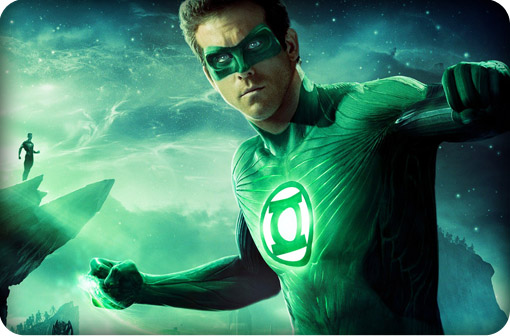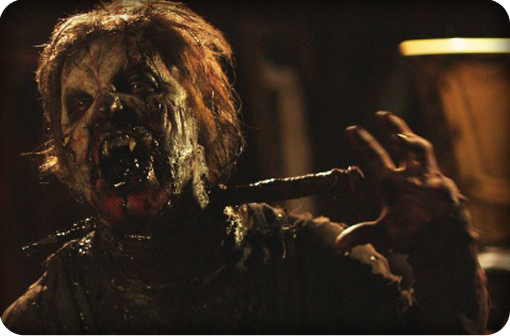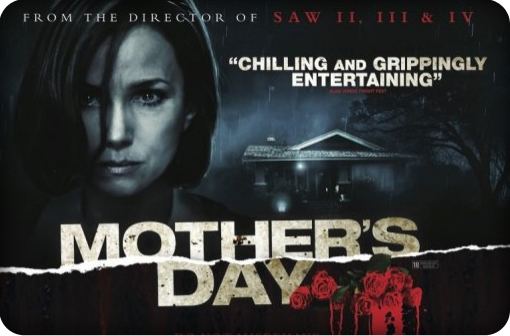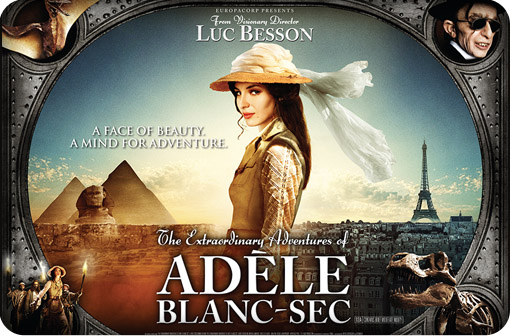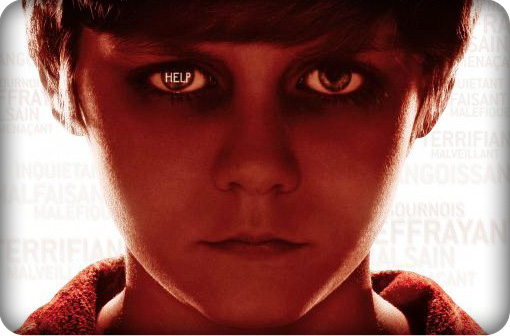
Given some of the hyperbole and vitriol generated by The Tree of Life when it won the Palme d‘Or at this year’s Cannes film festival, I was half expecting this to be a film that would deliver either a life changing experience or 2 hours 20 minutes of pretentious bollocks. While both points of view have their champions, I did in fact find it to be a visually stunning, occasionally flawed, yet always thoughtful film; part spiritual meditation on family and our place in the universe and part beguiling dreamscape providing testament to the power of the cinematic image.
This is a film that sets one man’s reminiscences of growing up in a picket fence suburb of Waco, Texas within a context of nothing less than the creation of the universe and the evolution of the planet earth. For the most part the story is concerned with the childhood of Jack O’Brien (Sean Penn as an adult, Hunter McCracken as a child) and this is depicted through a combination of subdued, everyday scenes of domesticity, along with a series of impressionistic vignettes over which whispered prayers and thoughts are heard.
In particular the film focuses on Jack’s relationship with his father (Brad Pitt stepping into a role originally intended for Heath Ledger), an authoritarian yet decent man from whom the adult Jack is clearly estranged. The contradictions Jack experiences in his feelings towards his father contrast sharply with the love and affection he feels for his mother (Jessica Chastain) and two younger brothers. So far so familiar but what helps elevate this film to another level is that all of this is preceded by and interspersed with a depiction of the big bang, the formation of our solar system and the creation of life on our planet, right up to the arrival of an asteroid that wipes out the dinosaurs. Given this structure, the film invites symbolic readings of its every aspect and it is tempting to see Jack as the embodiment of humanity and his father as God himself, their relationship a mirror of civilisation’s continual struggle with the concept of God and the notion of free will.
However, in contrasting the specific with the universal, and drawing parallels with the life of the planet and that of one man, the film certainly offers redress to the point of view that human life is insignificant when viewed within the context of an ever expanding universe. Instead it counters that human life can’t be insignificant because this is where all of those billions of years of evolution have led. So as far as we’re concerned, that infinite vastness of space and time gives us significance rather than depriving us of it because it has led right to us and the here and now.
As a drama, The Tree of Life frequently dispenses with conventional narrative, the first hour in particular being mostly a succession of seductive imagery and abstract snatches of family life, philosophy and scripture. None of which is to say that there isn’t a story here, as Malick delivers a tale that becomes more involving the longer you stay with it. It’s just that he does things a little differently.
For those of us whose formative years took in 80s franchises like The Karate Kid and Rocky, the mention of the word ‘montage’ will evoke memories of Ralph Macchio waxing on and off or Sylvester Stallone pounding on spare ribs and chasing chickens prior to a world title fight. However, in Malick’s hands, the montage becomes something more than a cinematic device to convey the passage of time, as he utilises it to show us the truth of who these characters are and convey real emotional drama.
For instance, there’s a moment when Jack’s voice over asks how his mother ever managed to bear the death of one of her sons. Malick then delivers such a tender and convincing overview of their relationship, full of glimpsed moments both trivial and monumental, that you can only wonder at the question yourself. It’s a sequence that conveys so much with so little, the camera slowly moving between and around Mrs O’Brien and her boys, gently insinuating its way into their lives. We see a young Jack looking at his brother for the first time and flinching as the baby moves its hand towards him and Mrs O’Brien maintaining the pretence of normality as she shields her son’s eyes from a neighbour who has collapsed and is having a seizure. What dialogue there is, is overheard rather than heard, sounding much like conversations do when listened to through the haze of a mid-afternoon doze in the sun.
In addition to the emotional power of much of the film, the variety of technical skill on display throughout demonstrates why Malick remains one of the few directors whose work really should be seen on the big screen. The scenes set on a prehistoric earth in particular are just stunning as some truly alien looking landscapes evolve and the camera dwells on the formation of life both on land and in the sea. The whole sequence, along with depictions of galaxies forming and cells merging had such a relaxing effect on me that at one point I could feel myself becoming positively New Age. Had this been made in the 60s it may well have been the only show in town for the experimental crowd.
The camera movement is constant, always looking up and outwards at a sky viewed through the branches of trees or the glass ceiling of modern city buildings. Also, the sound design is subtly effective, especially in the earlier part of the film, often employing gentle echoes and distortions that give the impression the universe is continually moving and evolving while these family dramas play out.
The only problem I had with it all was the look and feel of some of the scenes involving Sean Penn, which unfortunately for some audiences may evoke comparisons with those black and white TV adverts for perfume (the ones where serious men wearing designer suits, a white shirt open at the neck, wander on empty beaches or across desert sands looking all angst ridden and moody). The effect was compounded by some of the voice overs, again mostly involving Sean Penn, and the frequency of their use was an affectation the film could have done without.
All of that said though, this is still a unique and important film from a director whose world view is a refreshing counterpoint to much of the cynical and pessimistic fare offered up by much of serious contemporary cinema. As an exercise in film making it is often jaw-dropping, as an emotional drama it is frequently moving and as an essay on life, the universe and everything, it is as ambitious as almost any film I’ve ever seen. It won’t be for everyone of course and without wishing to sound too vague, it’s an experience I found was best absorbed rather than rationalised, its potency lying in how it made me feel rather than what it made me think. In the final analysis some may feel that the message of The Tree of Life is a fairly simple one. However, the experience of watching it isn’t.
Expected Rating: 5 out of 10

‘The Tree of Life’ is out in the UK on July the 8th

